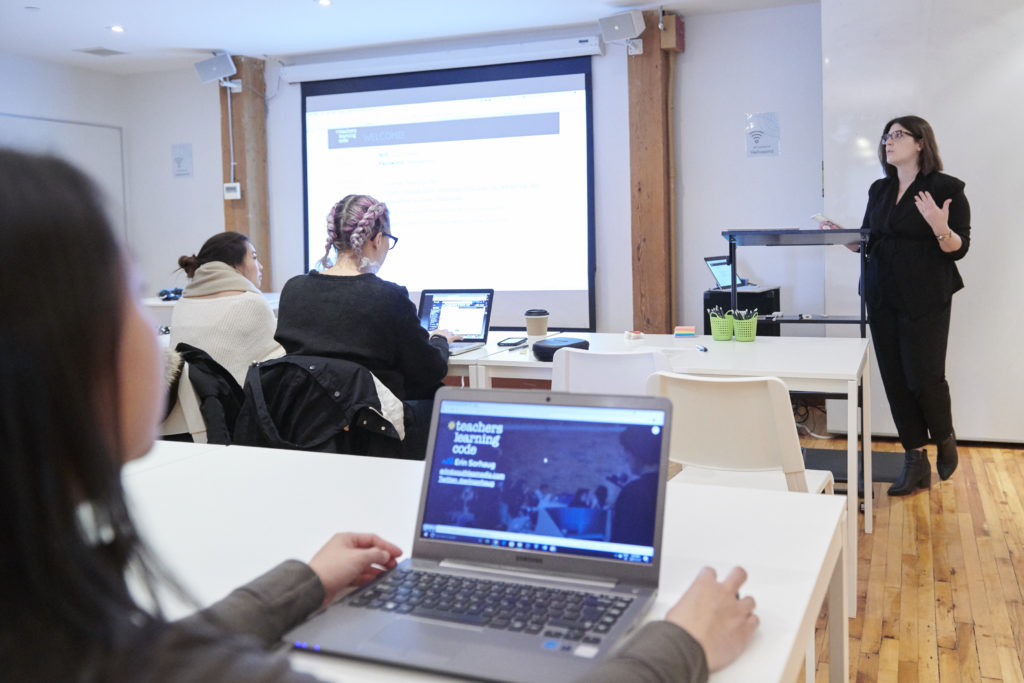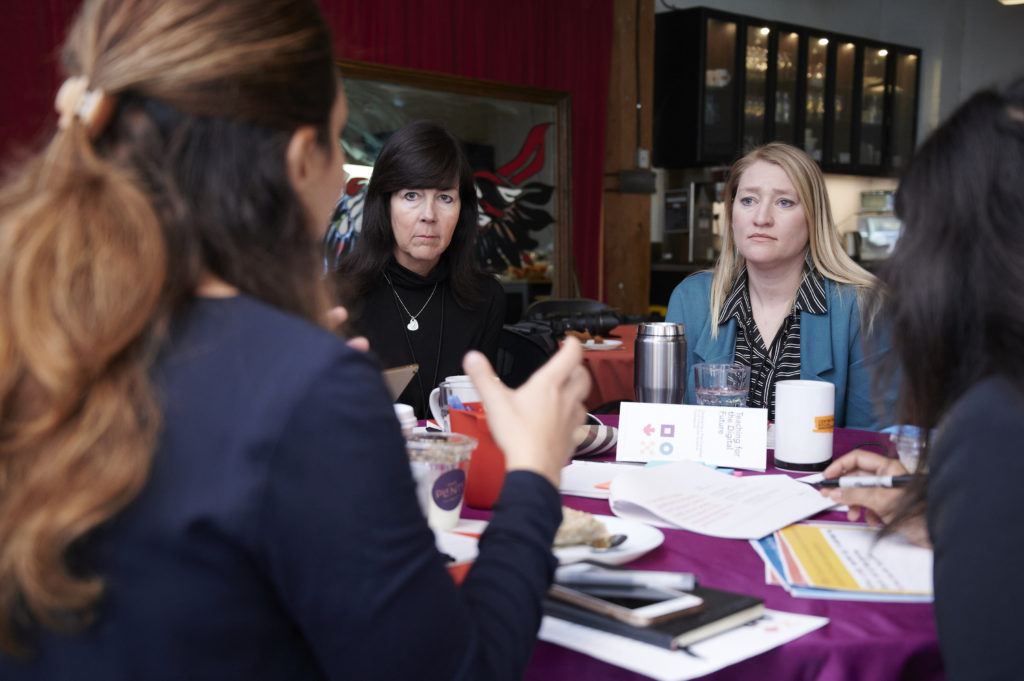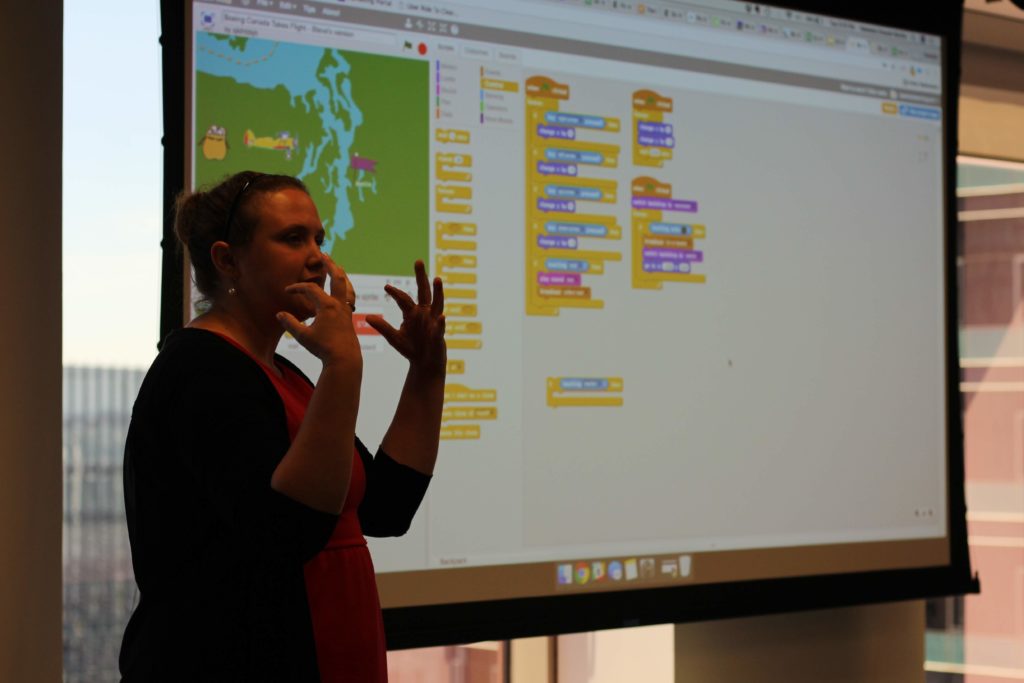The K–12 Computer Science Framework: An Update!
We are thrilled to share with you some key learnings we discovered from our feedback sessions on the second working document of the K–12 Computer Science Framework — and some actions we are taking, too!
The Feedback Process
In January 2020, we shared our second working document, titled “Teaching for the Digital Future: Developing a Pan-Canadian K–12 Computer Science Framework,” for feedback and evaluation. Our goal was to take a two-pronged approach for gathering feedback: bottom-up and top-down.
We placed a strong focus on our bottom-up approach, gathering input from educators since they will be the primary audience for the final Framework. Their direct knowledge of classroom learning and student needs is vital. And while it might seem logical to focus specifically on computer science teachers, we didn’t! In fact, we decided it was really important to gather the voices of ALL teachers, since we are striving to have computer science integrated across all subjects in the curriculum, especially in K–8.

Our top-down approach invited policymakers and staff from the various ministries of education across Canada to weigh in on the document and provide recommendations. We also engaged experts working in the field, those who specialize in all the technical elements of computer science.
While we invited folks to provide feedback on the whole document, we were particularly interested in their thoughts around the five focus areas: Coding and Programming, Computing and Networking, Technology and Society, Data, and Design. We also wanted to hear about our learning progressions, as well as the core computer skills and competencies that all high school students should be able to demonstrate by graduation.
Once we gathered the feedback, we hosted a workshop and invited eight computer science experts to join us for a more detailed discussion of the results. This allowed us to tackle some of the issues that were raised.
Two Key Findings…
- Naming the Framework. There was much discussion (and some debate!) about what we should call the K–12 Computer Science Framework. What it really boiled down to was the definition of computer science. By its most academic definition, computer science refers to coding and programming. But for some people, including many educators, computer science is more than that. It represents the multi-dimensionality of computing and includes all the elements of technology, such as the five focus areas we are proposing, as well as digital literacy. After much discussion, we are considering calling this the K–12 Computer Science Education Framework. The addition of the word education validates the inclusion of all five focus areas in the framework and encapsulates everything we are trying to achieve.
- The learning progressions. Our initial idea was that learning progressions would be quite broad. We looked at them as the pathways needed to unlock skills, rather than grade level achievements. But some of the feedback suggested we consider incorporating expectations by grade (e.g., by grade 4 you will achieve X), because that is what educators are used to. Our challenge, however, is that because computer science learning in the classroom is relatively new and inconsistent across the country, there isn’t enough evidence-based data to support what should be covered in each grade. Further complicating a grade-level approach is that computer learning is introduced at different grades across Canada. We also received feedback suggesting we consider getting rid of the learning progressions altogether. Where we land on this is still under discussion.

…and a Surprise Validation
One of the most exciting parts about collating the feedback was reading request after request for support material! Why was this so exciting for us? Well, because it validated some key work behind the scenes.
The Framework is one thing, but another component is introducing tools and resources that educators can use right away. To that end, we’ve been creating Lesson Crosswalks: a collection of ALL of our lesson plans, including which of the five focus areas they support, mapped out against every math, science, and English curriculum across Canada! For example, we have an activity called “What does it mean to be green?” where students write a Haiku about how to keep their communities clean and use Scratch to create visuals. We’ve connected it with learning outcomes in the Ontario curriculum in both English and science.
So even though we didn’t specifically ask reviewers about this, it reinforced the value of the work we’d already been doing!

Next Steps?
We will continue to map the Lesson Crosswalks, as well as decide on the name of the Framework and the status of the learning progressions. Further drafts will be developed for review with our advisors…and then we launch both the Framework and the Lesson Crosswalks at the end of July. Stay tuned!
Thank you to all who participated and supported us in this process. We really appreciate everyone’s time and effort in helping us build the K–12 Computer Science Education Framework.
UPDATE: we’re so excited to share that the K-12 Computer Science Education Framework is now available! Click here to learn more.
We had quite an exciting journey creating this K-12 Computer Science framework and this would not have been possible without the incredible support from our amazing partners, the Government of Canada and Amazon!
Other Great Reads
-
Adapt to the new reality of work with free resources from Microsoft
In collaboration with: In today's job market, being able to adapt is the most valuable skill you can have. As AI, automation, and new technologies ...
-
Canada Learning Code and Skills4Good AI Launch National Partnership to Advance Responsible AI Literacy in Canada
New collaboration provides complimentary Responsible AI education and a national keynote to empower professionals in the Age of AI Canada Learning Code...
-
Desiree’s Win: A Mindset Shift, a Career Coach, and a Brand-New Role
When Desiree joined Career Collective, she was feeling stuck. A recent graduate in applied mathematics, she was navigating the challenges of the job marke...
